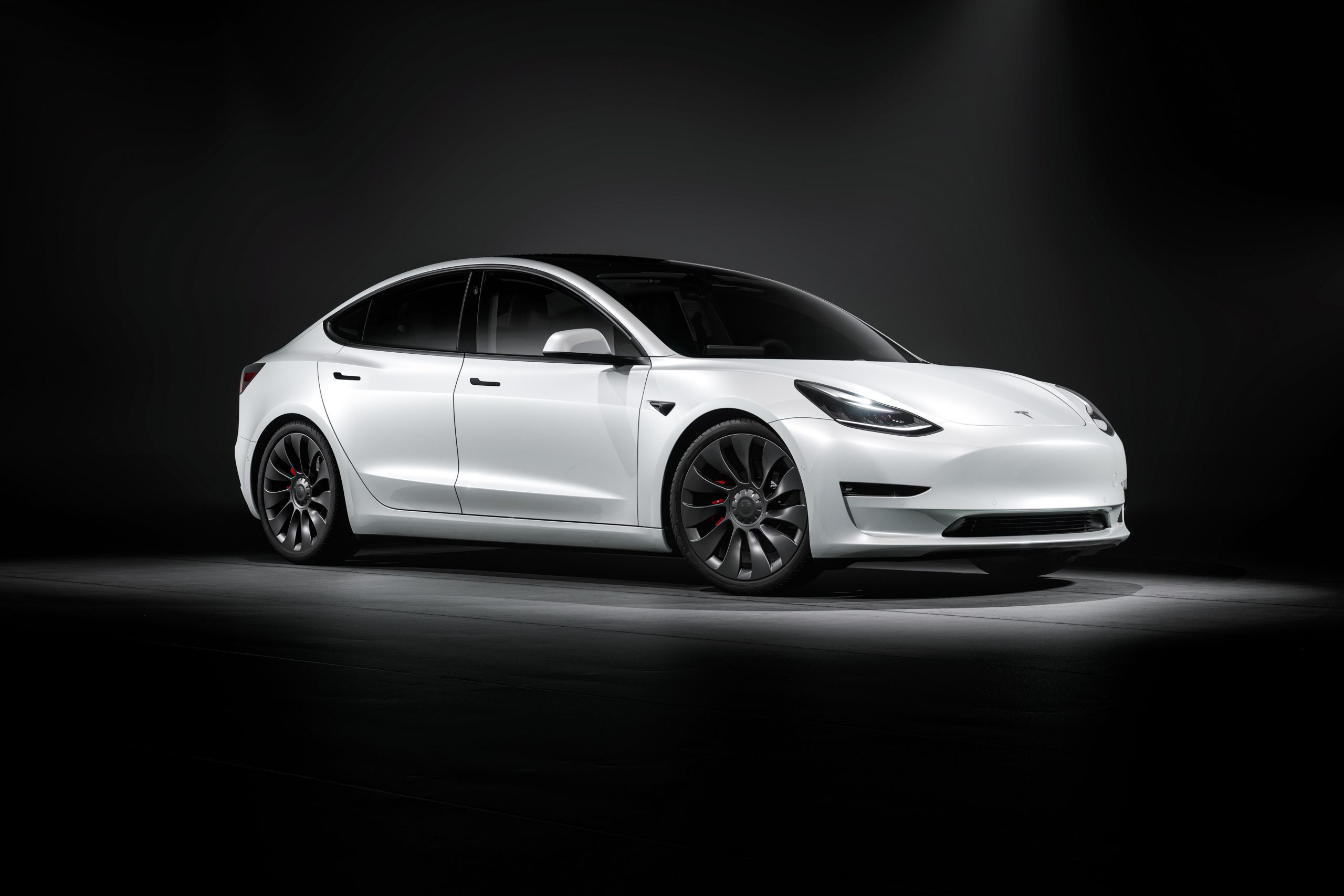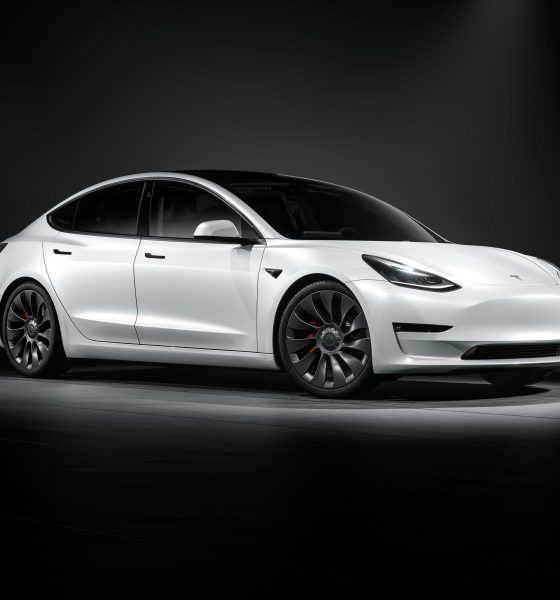

News
‘Average Americans’ can’t afford EVs: Former White House official, others rip Buttigieg
The all-too-common myth that electric vehicles are not affordable to the average American is now being reignited by former Trump White House Communications Official Mercedes Schlapp, among others, who ripped Transportation Secretary Pete Buttigieg for suggesting that the answer to rising gas prices was to buy an electric car.
Sec. Buttigieg appeared on MSNBC on Sunday to suggest that American consumers can avoid soaring gas prices by purchasing an electric vehicle. Buttigieg said to Jonathan Capehart in an interview on “The Sunday Show” that EV owners will have a “$12,500 discount” thanks to the new EV incentive plan that was included in the House-passed “Build Back Better” plan from President Joe Biden. While only the Chevrolet Bolt EV will qualify for the full $12,500 amount, nearly every EV built in the United States will qualify for a $7,500 tax credit.
Buttigieg also went on to say that those in rural areas would be most likely to benefit from the purchase of an EV. “The people who stand to benefit most from owning an EV are often rural residents who have the most distances to drive, who burn the most gas, and underserved urban residents in areas where there are higher gas prices and lower-income,” Buttigieg claimed. “They would gain the most by having that vehicle. These are the very residents who have not always been connected to electric vehicles that are viewed as kind of a luxury item.”
Transportation Sec. Buttigieg: Buy an EV and ‘never worry about gas prices again’
However, not everyone was a fan of Buttigieg’s suggestion to transition to EVs. Former White House Director of Strategic Communications Mercedes Schlapp said that EVs are not widely affordable, and only people “in the world that Pete Buttigieg lives in” can afford them. “Average Americans struggling with record-high gas prices? Not so much,” she added.
“Let me assure you there is very little overlap between ‘families that can afford to buy a $50,000 electric car,” Amy Swearer of the Heritage Foundation said. “And ‘families that are worried about gas prices because an extra $50 a month is actually a week’s worth of groceries.’ Do you know what a lot of families could do with that extra $50 a month/$1300 a year?” Swearer added according to the New York Post.
Kelley Blue Book lists the average transaction price in October 2021 for a new vehicle at $46,036, with Tesla offering an average price of $54,560. It should be noted that Tesla has two Model 3 variants under the average $54,560 price. The Model Y’s Long Range variant is available for slightly more at $58,990. However, these prices are before factoring in federal incentives, gas savings, and money saved through lack of maintenance. If the minimum $7,500 EV tax credit were available right now, all but one of Tesla’s five mass-market vehicle variants would fall under the average cost of a Tesla vehicle. The Model 3’s Rear Wheel Drive and Long Range All-Wheel Drive configurations would cost less than the national average for a new car. Tesla vehicles would qualify for $8,000 in incentives: $7,500 for being built in the U.S. and an additional $500 for equipping a U.S.-made battery.
Now, if we factor in other vehicles in the United States, the Chevrolet Bolt, which has had production suspended until 2022 due to battery malfunctions, has several sub-$30,000 variants available. Ford’s Mustang Mach-E starts at $42,895 and can go as low as $35,395 after incentives. Three of Ford’s four Mach-E variants would fall under KBB’s $46,036 average price after incentives.
Unfortunately, politicians with widespread media coverage are able to spread misinformation regarding the price of electric vehicles. Many EVs are available on the market today are actually extremely affordable. Even if the price of an EV is slightly higher than a gas car, owners can expect savings through missed trips to the gas pump and a lack of oil changes. But, after all, we’ve learned that the White House, at nearly any time and under nearly any administration, has missed the mark regarding EVs, and it has not been uncommon for politicians to spread information that is not necessarily accurate.
I’d love to hear from you! If you have any comments, concerns, or questions, please email me at joey@teslarati.com. You can also reach me on Twitter @KlenderJoey, or if you have news tips, you can email us at tips@teslarati.com.

Elon Musk
Elon Musk’s X will start using a Tesla-like software update strategy
The initiative seems designed to accelerate updates to the social media platform, while maintaining maximum transparency.

Elon Musk’s social media platform X will adopt a Tesla-esque approach to software updates for its algorithm.
The initiative seems designed to accelerate updates to the social media platform, while maintaining maximum transparency.
X’s updates to its updates
As per Musk in a post on X, the social media company will be making a new algorithm to determine what organic and advertising posts are recommended to users. These updates would then be repeated every four weeks.
“We will make the new 𝕏 algorithm, including all code used to determine what organic and advertising posts are recommended to users, open source in 7 days. This will be repeated every 4 weeks, with comprehensive developer notes, to help you understand what changed,” Musk wrote in his post.
The initiative somewhat mirrors Tesla’s over-the-air update model, where vehicle software is regularly refined and pushed to users with detailed release notes. This should allow users to better understand the details of X’s every update and foster a healthy feedback loop for the social media platform.
xAI and X
X, formerly Twitter, has been acquired by Elon Musk’s artificial intelligence startup, xAI last year. Since then, xAI has seen a rapid rise in valuation. Following the company’s the company’s upsized $20 billion Series E funding round, estimates now suggest that xAI is worth tens about $230 to $235 billion. That’s several times larger than Tesla when Elon Musk received his controversial 2018 CEO Performance Award.
As per xAI, the Series E funding round attracted a diverse group of investors, including Valor Equity Partners, Stepstone Group, Fidelity Management & Research Company, Qatar Investment Authority, MGX, and Baron Capital Group, among others. Strategic partners NVIDIA and Cisco Investments also continued support for building the world’s largest GPU clusters.
News
Tesla FSD Supervised wins MotorTrend’s Best Driver Assistance Award
The decision marks a notable reversal for the publication from prior years, with judges citing major real-world improvements that pushed Tesla’s latest FSD software ahead of every competing ADAS system.

Tesla’s Full Self-Driving (Supervised) system has been named the best driver-assistance technology on the market, earning top honors at the 2026 MotorTrend Best Tech Awards.
The decision marks a notable reversal for the publication from prior years, with judges citing major real-world improvements that pushed Tesla’s latest FSD software ahead of every competing ADAS system. And it wasn’t even close.
MotorTrend reverses course
MotorTrend awarded Tesla FSD (Supervised) its 2026 Best Tech Driver Assistance title after extensive testing of the latest v14 software. The publication acknowledged that it had previously criticized earlier versions of FSD for erratic behavior and near-miss incidents, ultimately favoring rivals such as GM’s Super Cruise in earlier evaluations.
According to MotorTrend, the newest iteration of FSD resolved many of those shortcomings. Testers said v14 showed far smoother behavior in complex urban scenarios, including unprotected left turns, traffic circles, emergency vehicles, and dense city streets. While the system still requires constant driver supervision, judges concluded that no other advanced driver-assistance system currently matches its breadth of capability.
Unlike rival systems that rely on combinations of cameras, radar, lidar, and mapped highways, Tesla’s FSD operates using a camera-only approach and is capable of driving on city streets, rural roads, and freeways. MotorTrend stated that pure utility, the ability to handle nearly all road types, ultimately separated FSD from competitors like Ford BlueCruise, GM Super Cruise, and BMW’s Highway Assistant.
High cost and high capability
MotorTrend also addressed FSD’s pricing, which remains significantly higher than rival systems. Tesla currently charges $8,000 for a one-time purchase or $99 per month for a subscription, compared with far lower upfront and subscription costs from other automakers. The publication noted that the premium is justified given FSD’s unmatched scope and continuous software evolution.
Safety remained a central focus of the evaluation. While testers reported collision-free operation over thousands of miles, they noted ongoing concerns around FSD’s configurable driving modes, including options that allow aggressive driving and speeds beyond posted limits. MotorTrend emphasized that, like all Level 2 systems, FSD still depends on a fully attentive human driver at all times.
Despite those caveats, the publication concluded that Tesla’s rapid software progress fundamentally reshaped the competitive landscape. For drivers seeking the most capable hands-on driver-assistance system available today, MotorTrend concluded Tesla FSD (Supervised) now stands alone at the top.
News
Elon Musk’s Grokipedia surges to 5.6M articles, almost 79% of English Wikipedia
The explosive growth marks a major milestone for the AI-powered online encyclopedia, which was launched by Elon Musk’s xAI just months ago.

Elon Musk’s Grokipedia has grown to an impressive 5,615,201 articles as of today, closing in on 79% of the English Wikipedia’s current total of 7,119,376 articles.
The explosive growth marks a major milestone for the AI-powered online encyclopedia, which was launched by Elon Musk’s xAI just months ago. Needless to say, it would only be a matter of time before Grokipedia exceeds English Wikipedia in sheer volume.
Grokipedia’s rapid growth
xAI’s vision for Grokipedia emphasizes neutrality, while Grok’s reasoning capabilities allow for fast drafting and fact-checking. When Elon Musk announced the initiative in late September 2025, he noted that Grokipedia would be an improvement to Wikipedia because it would be designed to avoid bias.
At the time, Musk noted that Grokipedia “is a necessary step towards the xAI goal of understanding the Universe.”
Grokipedia was launched in late October, and while xAI was careful to list it only as Version 0.1 at the time, the online encyclopedia immediately earned praise. Wikipedia co-founder Larry Sanger highlighted the project’s innovative approach, noting how it leverages AI to fill knowledge gaps and enable rapid updates. Netizens also observed how Grokipedia tends to present articles in a more objective manner compared to Wikipedia, which is edited by humans.
Elon Musk’s ambitious plans
With 5,615,201 total articles, Grokipedia has now grown to almost 79% of English Wikipedia’s article base. This is incredibly quick, though Grokipedia remains text-only for now. xAI, for its part, has now updated the online encyclopedia’s iteration to v0.2.
Elon Musk has shared bold ideas for Grokipedia, including sending a record of the entire knowledge base to space as part of xAI’s mission to preserve and expand human understanding. At some point, Musk stated that Grokipedia will be renamed to Encyclopedia Galactica, and it will be sent to the cosmos.
“When Grokipedia is good enough (long way to go), we will change the name to Encyclopedia Galactica. It will be an open source distillation of all knowledge, including audio, images and video. Join xAI to help build the sci-fi version of the Library of Alexandria!” Musk wrote, adding in a later post that “Copies will be etched in stone and sent to the Moon, Mars and beyond. This time, it will not be lost.”








